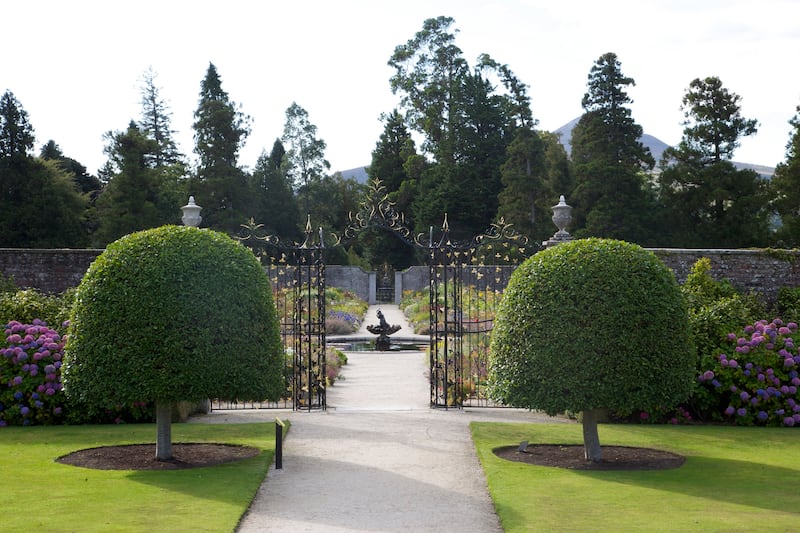Stuck for a summer project? How about an enormous squirrel in the front garden? Maybe a Box hedge dragon? Head Gardener at Powerscourt, Alex Slazenger says topiary also has its more elegant side, and he should know: Powerscourt’s Italian Gardens were named third best in the world by National Geographic.
Only third best?
Yes, but as the top two were Versailles and Kew, it’s some achievement. Topiary at Powerscourt means tastefully trimmed bushes, and conical trees, rather than those enormous dinosaurs and unicorns that they tend to go for in England and, oddly enough, Australia.
Can I do topiary out of anything?
“I love you,” says Slazenger, which does make one wonder about the amorous nature of topiarists, until I realise he’s not talking about me, but Yew. Box is another favourite of bush trimmers, although in recent years, Box Blight has become a thing, and as Slazenger and his Powerscourt team are getting away from pesticides in pursuit of more sustainable gardening, Yew and Portuguese Laurel are where it’s at. Privet is also good for urban topiarists, as it doesn’t mind pollution too much.
And hey presto, instant Laurel Dog?
‘Fraid not. Advice from the Royal Horticultural Society says the simplest shapes to start with are balls, pyramids, cones and obelisks. Even then, you’re looking at a project that will evolve over years, rather than be all done in a month. It’s also easiest to start with something in a pot, than get stuck into a huge tree. The good thing is it’s not a major investment. Work with the general shape of the plant, trim, neaten and prune, and watch your tasteful Italianate shape emerge. You can get by with secateurs, but topiary shears will give you more precision. From around €16 at most good garden centres, they won’t break the bank.
READ MORE

I’m still all about the animals. Do I start with an animal-shaped bush, or cut my bush into the shape of an animal?
Neither. Elaborate topiary is done with a wire frame. Either place the frame around the plant, then weave, train, tie and prune until all you see is the animal-shaped leaves; or stuff the frame with sphagnum moss, and plant through the frame into the moss.
This is essentially what Jeff Koons’ team did with his famous floral Puppy outside the Guggenheim Bilbao. Make your own frame with chicken wire, or get carried away with the options at UK-based toptopiary.co.uk, where frames range from a small puppy at £10, up to £2,950 for the Loch Ness Monster; with Corgis and horses somewhere in between.
Now I’m concerned I’m being tacky
There are certainly schools of thought about what’s considered “classy”, but gardens have fashions, just like everything else. The problem with fashions and gardens, however, is that in gardens, the best things do take years to evolve. “The key,” says Slazenger, “is to work with nature. It is very obvious our Italian garden is man-made, but it interacts with the greater landscape, with the water, and the view of the Sugarloaf, so it looks like it was almost meant to be there.”
Doesn’t leave much room for a giant squirrel then
Maybe not, but Slazenger does admit he’d have a hankering to have a go at a winged horse, echoing the ones that appear on the Powerscourt crest. “It would be lovely to showcase those skills. I don’t know where you would put it, maybe we could have an area, even a competition ...” he says as topiary takes root in his imagination. Time to get planting so.
Entry to the gardens at Powerscourt costs €5/€12.50, tickets at powerscourt.com













